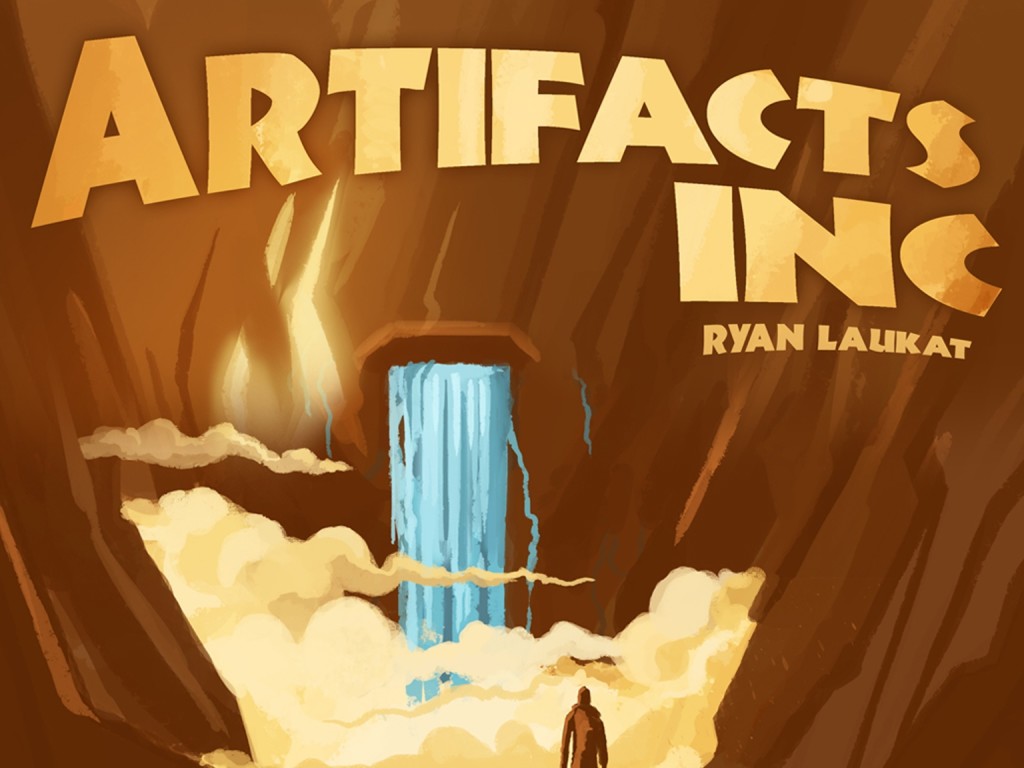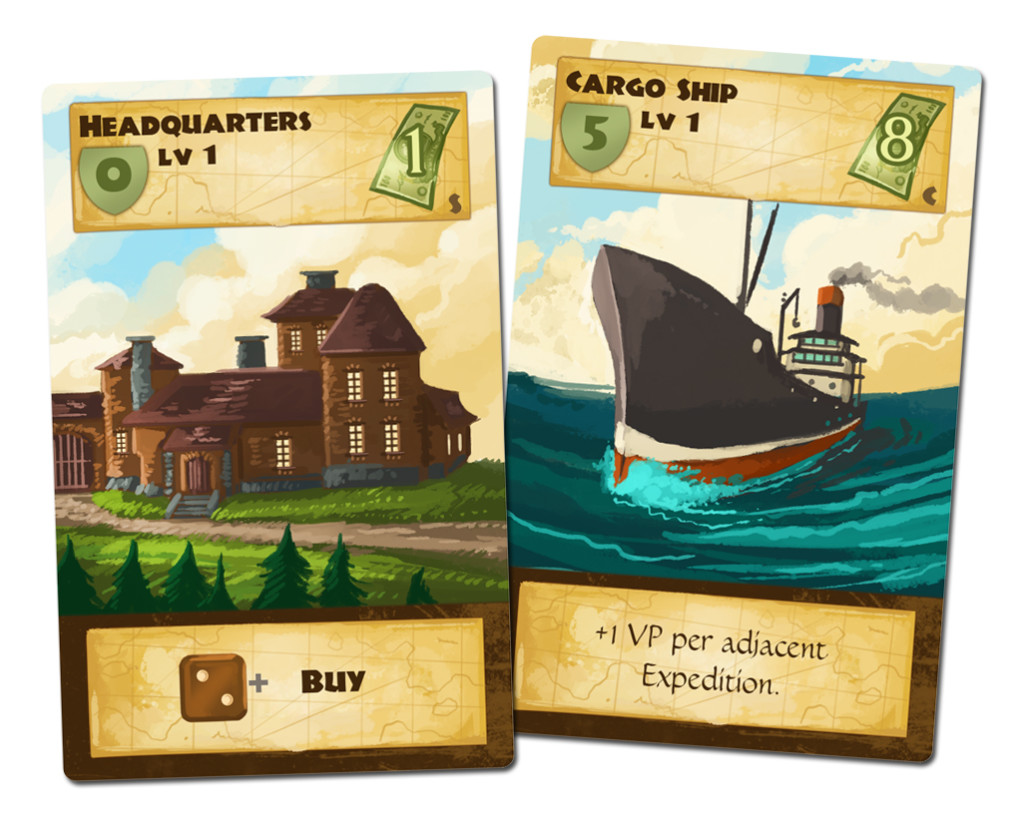I can’t help but hum “dun-da-dun-tah” every time I glance at this game. Who can blame me? I mean, who wouldn’t want to pretend that they’re Indiana Jones and go on adventures in the search for ancient artifacts? In “Artifacts, Inc.”, you’ll be able to just that! More specifically (taken from the rulebook), “players can choose to focus on making lots of money by selling artifacts, having museum majorities, creating the best combination of expeditions and buildings, or searching below the waves for lost cities and hidden treasures.” Before we ready our whips and don our fedoras, I’d like to thank Ryan Laukat from Red Raven Games for providing me with a press copy for review purposes.
Components
The game includes 48 Wooden Cubes (in 4 colors), 72 Cards, 1 Reputation Board, 35 Dollar Tokens, 7 Dice, and a Rule Book
Setup & Gameplay
There’s an entire page devoted to game setup, so I’ll opt to summarize this by saying that there are many different card types (also called assets) and they are each seeded by deck near or on the reputation board. Players then roll to determine who goes first. Each player gets cubes of one color, a specific amount of money (depending on who’s first, second, etc.), and one of each card from the “S” deck. They’ll also place one cube near the reputation board so that reputation can be tracked throughout the game. Turns proceed in clockwise order, starting with the first player.
On a player’s turn, they’ll roll a number of dice equal to the adventurer dice symbols listed on the cards they own. After rolling, they’ll place the dice on various cards to perform actions. The active player may place the dice on asset cards he owns, on public cards, or on the reputation board where it says “Dive”. Each action can hold one die and the die must meet the requirements of the action to be placed there. When a die is placed, the action is performed immediately. If multiple dice are listed on the card, then each die symbol can perform the action once. Play continues to the next person clockwise once a player has placed all of their dice and taken their actions.
Through actions, players will begin gaining reputation which the primary method of winning the game. In addition to gaining reputation, players can gain and sell artifacts, purchase a new asset card or upgrade an existing one they own to level two (by flipping it), collect money, and dive for underwater cards. When a player reaches 20 reputation, players continue taking turns until everyone has had an equal number of turns throughout the game. Museum majority points are awarded and then whoever has the most reputation at the end of it all, wins!
Editor’s Note: The above doesn’t cover all of the rules found in the manual, but should give you an idea as to how the game is played.
The Review
Finally, a game that lets me feel like Indiana Jones without having to dive into a pit full of snakes! The card art is incredibly well done and everything fits the theme nicely. It’s hard not to bust out the Indiana Jones quotes while I’m playing, though I fear most of them would fly over my family’s heads anyway. No matter how much I keep insisting that “it belongs in a museum”, I’d be sure to get odd looks and possibly be in a straight jacket before the night was over. Although, I could probably make amends by making chilled monkey brains and eyeball soup…they’d love that.
It’s amazing how many choices one can make in this game considering there are only seventy-two cards in the box. Will you buy a new asset or flip an existing one to level two? If you choose the former, where do you plan on putting it? You see, players have a top and bottom row and some cards affect others that are adjacent to them. Will you opt to focus on dominating the museums by selling artifacts on a regular basis, or sell to a private collector (which is easier to roll for) and potentially earn more money to buy/upgrade more asset cards? Of course, underwater diving has its perks too as some asset cards give bonuses when certain treasure types are found (on top of the standard one reputation point per underwater card collected).
“Artifacts, Inc.” is a fine example of a dice worker placement game done right. The theme is excellent and the gameplay engaging. I’d say the learning curve is moderate, what with all the different card types and sections of the play area. Setting up the game for the very first time may even seem daunting to casual gamers. Luckily, there’s a nice illustration in the manual that gives an example card layout once the public cards, asset cards, and reputation board are all set up. Like “Eight-Minute Empire” (another game by Ryan Laukat from Red Raven Games), “Artifacts, Inc.” quickly impressed me with both its content and low price tag ($15-20 on Amazon as of 12/10/15). If you enjoy worker placement games that feature a good mix of dice rolling and strategy, then give this one a go. Snakes and melting faces not included.
Final Verdict: 9/10


